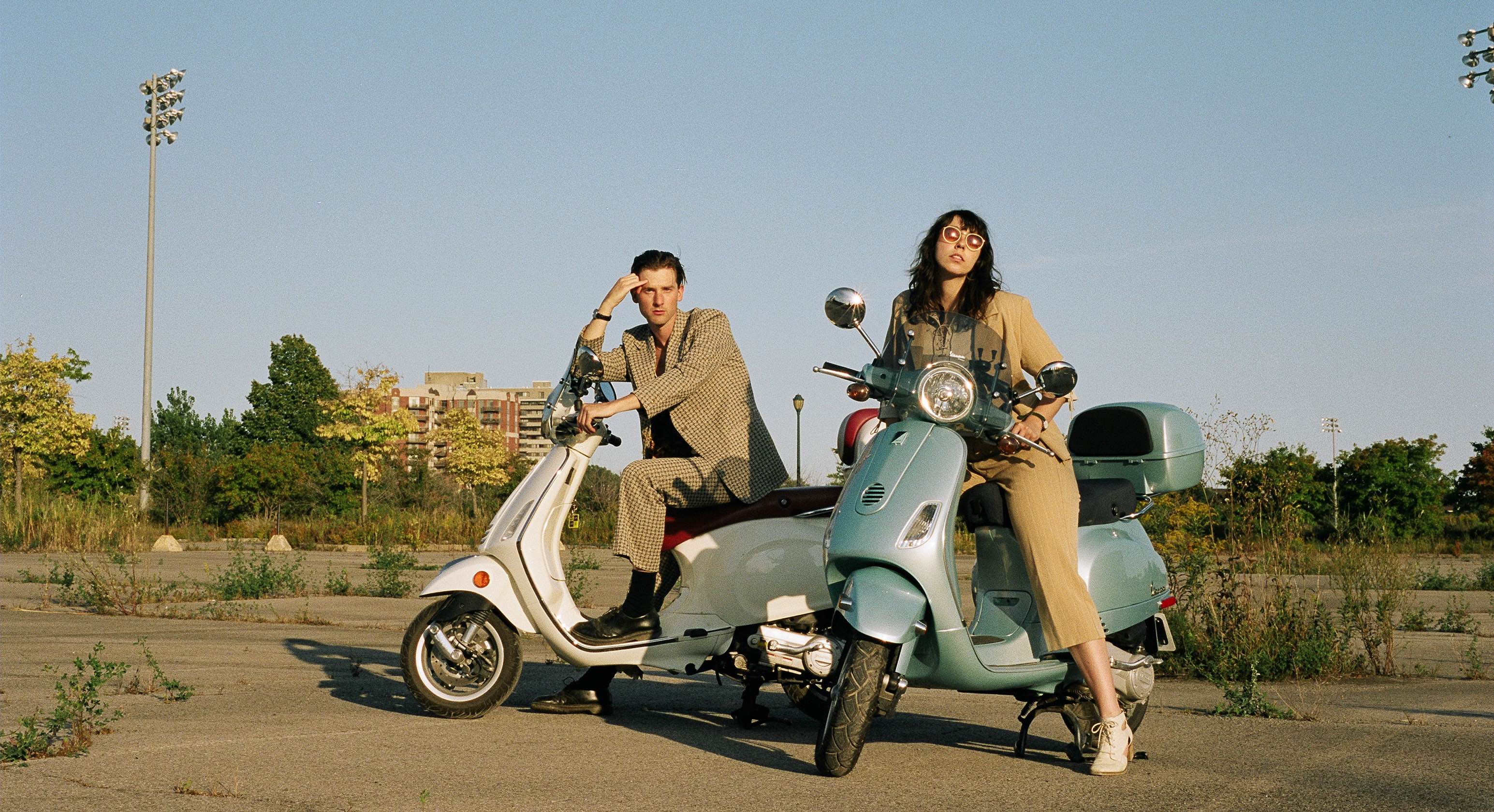MEMBERS: Alexander “Agor” Kerby and Raphaelle “Ra” Standell
FOUNDED: 2010
FROM: Montreal, Quebec
YOU MIGHT KNOW THEM FROM: Experimental popsters Braids, for whom Standell is the frontwoman, or from Untogether, Blue Hawaii’s first LP
NOW: Releasing their second album, Tenderness, on Arbutus Records and, presumably, sipping tropical drinks in celebration
Blue Hawaii’s latest record, Tenderness, is a reunion. The band’s two members, Raphaelle Standell and Alexander Kerby, spent four years apart starting before the 2013 release of their debut, Untogether. The distance was a conscious decision from both parties after their romantic relationship came to an end. Recently, as they slowly began to re-enter one another’s lives, they each realized that making music together was one of the few things that truly made them happy, and that their friendship and musical kinship was too valuable to stop altogether.
With Tenderness, the duo has come back fresh and optimistic, and the album is almost the opposite of its predecessor. Standell and Kerby consciously aimed to make a more positive record and were more willing to dive into issues of self-love and technological obsession than they were on Untogether. Even when the themes are particularly heavy, a positivity reigns throughout. It’s Blue Hawaii’s strongest, most cohesive, prettiest, and, well, most tender statement to date.
“We didn’t want it to be a sappy puddle,” Standell says over Skype from Montreal, before Kerby adds to the thought: “It’s still sappy.” Sappy as it may be, Tenderness is a huge step forward for the duo, building upon Untogether’s downcast dance landscape, flipping the script and concocting something more joyous from the band’s electro roots.
“I like the idea that we can use technology to be closer together.” — Alexander Kerby
The music on Tenderness, which spans disco, beat-scene textures, and hip-hop, was informed by Kerby’s time living in Berlin. “It’s easy to say, ‘Oh, I went to Berlin and got really into techno!’” he says. “But also the musical landscape over the last four years completely changed and became a lot more oriented to dance music.” He adds, “I think we’ve always been a production duo—we’ve never really been a band.”
The notion of Blue Hawaii being more comfortable behind the boards than in a live room is evident in the album’s immaculately crafted details. “No One Like You” surrounds Standell’s voice with sampled violin stems and a beat that sounds like it was crafted underwater, while “Make Love Stay” incorporates Eastern-tinged samples and suggests a version of TLC raised on early European house music.
“How do I make love stay,” Standell asks during the latter song’s chorus. A unifying theme of Tenderness is born from the realization that the path to health and stability emanates from a certain amount of self-love. “The music I enjoy the most makes me feel really good,” Standell says. “Music that I’m drawn toward is celebratory, and…that’s something I really wanted to put in our music.”
Tenderness’s cover features the pair on a couch, more interested in their phones than they are in each other. This core concept arose while Standell was in a long-distance relationship that was mostly played out online. “I just realized how different of a person I was on the phone, how different I was in communicating,” she notes. This idea propels much of Tenderness’s ideology, although Kirby is quick to point out that our relationship to technology isn’t entirely bad. “I like the idea that we can use that technology to be closer together,” he says.
And technology is what eventually brought Kirby and Standell back together, too, as they slowly began to revisit the idea of Blue Hawaii. Tenderness is a document of their relationship, and of relationships in general: the good and the bad, the ways they expose room for growth and the joys of finding someone who likes what you like. In that sense, their new LP praises technology and its power to connect. “There’s a way to find that warmth underneath,” Kirby says. Tenderness is that discovery. FL
This article appears in FLOOD 7. You can download or purchase the magazine here.







